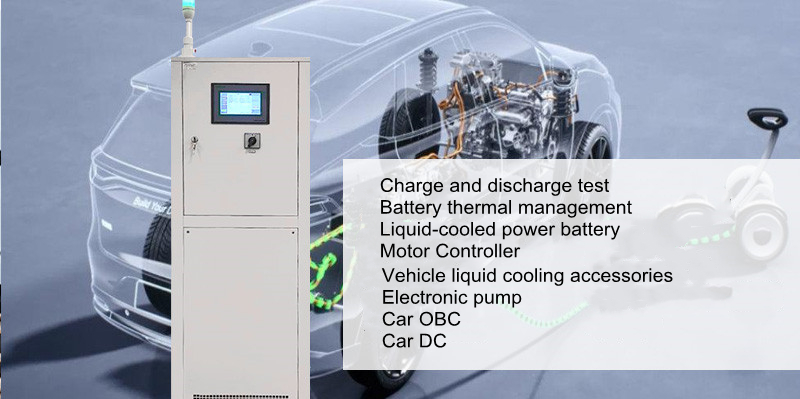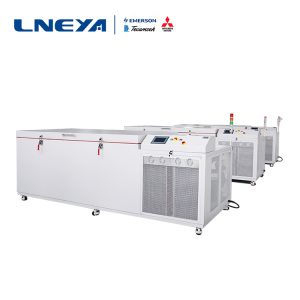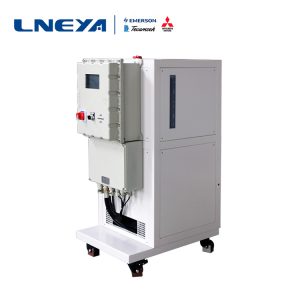Analysis of operating parameters and working conditions of automobile power module cooling system
Before choosing, you need to know what factors are related to the operating parameters and working conditions of the automotive power module cooling system. Then, from which aspects?

1. Evaporating pressure and evaporating temperature
In the operation of the cooling system of the automobile power module, the evaporation temperature and evaporation pressure are closely related to the heat brought by the cold water into the evaporator. When the heat load is large, the return temperature of the cold water of the evaporator increases, causing the temperature of the evaporator to rise, and the corresponding evaporation pressure also rises. On the contrary, when the heat load decreases, the return temperature of cold water decreases, and its evaporation temperature and evaporation pressure decrease.
2. Condensing pressure and condensing temperature
In the automotive power module cooling system, the pressure indicated by the high pressure gauge is called the condensing pressure, and the temperature corresponding to this pressure is called the condensing temperature. The level of condensing temperature is of decisive significance for the power consumption of the unit when the evaporating temperature does not change.
3. the pressure and temperature of cold water
The cold water flow of the evaporator is inversely proportional to the temperature difference between the supply and return water, that is, the greater the cold water flow, the smaller the temperature difference; conversely, the smaller the flow, the greater the temperature difference. Therefore, the working conditions of the cooling system group stipulate the temperature difference between the supply and return of the cold water, which actually regulates the cold water flow of the unit. This kind of cold water flow control is manifested as controlling the excessive drop of cold water through the evaporator.
4. the pressure and temperature of the cooling water
In order to reduce the power consumption of the cooling system group, the condenser temperature should be reduced as much as possible. The advisable measures have two aspects: reduce the return water temperature of the condenser; increase the amount of cooling water.
5. the suction temperature of the compressor
The suction temperature of the compressor, for reciprocating compressors, refers to the temperature of the refrigerant gas in the suction chamber of the compressor; for centrifugal compressors, it should be the temperature of the refrigerant gas on the suction guide vanes. The suction temperature not only affects the discharge temperature, but also has an important influence on the volumetric refrigeration capacity of the compressor. When the compressor suction temperature is high, the discharge temperature is also high, and the specific volume of the refrigerant is large when the refrigerant is sucked. At this time, the unit volume of the compressor is small, which is undesirable. On the contrary, when the suction temperature of the compressor is low, the cooling capacity per unit volume is large.
6. compressor discharge temperature
The exhaust temperature is much higher than the condensation temperature. The direct influence factor of the exhaust temperature is the suction temperature of the compressor, and the two are in a proportional relationship. If the suction and discharge valves of the reciprocating compressor are not tight or broken and cause leakage (internal leakage), the discharge temperature will rise significantly. In a centrifugal refrigeration unit, if air is mixed into the refrigeration system, both the suction temperature and the discharge temperature will increase.
7. the intermediate pressure and temperature of the cooling system group
The intermediate throttling air supplement device is called a power saver. The pressure in the power saver is the intermediate pressure of the unit, and the corresponding refrigerant temperature is the intermediate temperature. The principle of determining the intermediate pressure is to make the two-stage centrifugal refrigeration compressor effective The total power consumption of the low-pressure and high-pressure stage compressors is as small as possible, and the circulating refrigeration system is as large as possible.
8. Oil pressure difference, oil temperature and oil level
The lubricating oil system is an indispensable part of the normal operation of the unit. It provides lubrication and cooling conditions for the moving parts of the unit. The oil pressure difference, oil temperature and oil pressure height of the lubricating oil are the three elements to ensure the lubrication and cooling of the moving parts of the unit under normal working conditions.
Verwandte Empfehlungen
-
-
LNEYA super deep crying treatment using common sense
963For ultra-deep cold processing equipment, failure to pay attention to the use of the equipment may cause equipment failure. Before using the water-cooled ultra-cry cryogenic treatment, it should be checked whether all the valves between the equipm...
Details anzeigen -
Details der Schutzvorrichtung einer Vorrichtung zur Regelung der Temperatur einer zirkulierenden Flüssigkeit
1132Die Überlastungsschutzfunktion der Umwälzpumpe schaltet die Hauptstromversorgung der Umwälzpumpe ab, wenn die Temperatur der Umwälzflüssigkeit zu hoch eingestellt ist. Drücken Sie die grüne Taste beim Zurücksetzen; die rote Taste ist die Stopptaste...
Details anzeigen -
LNEYA high and low temperature heating refrigerator maintenance instructions
1135High and low temperature heating refrigerators use circulating water to replace circulating water regularly every month. If heat transfer oil is used, heat transfer oil should be replaced periodically every six months to one year. When the high an...
Details anzeigen
 LNEYA Industriekühler Hersteller Lieferant
LNEYA Industriekühler Hersteller Lieferant













